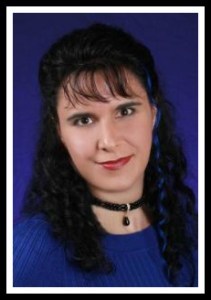Build a Bridge: From Story Beginning to Main Conflict
During one of my previous posts as a
Resident Writing Coach, we
talked about the importance of strong goals for helping our story move
forward. But as we discussed in the comments of that post, our characters can start
off with weaker���passive���goals, as they might not embrace the need to solve the
story-level problem right away.
In fact with many cases, the story problem
and main conflicts don���t make an appearance until later in the story. Think of stories
with thriller-type elements, where the protagonist can���t possibly know the
villain is making evil plans in their secret lair until rumors, spy reports, or
weird things occur later.
In those types of stories, our characters obviously
can���t create strong goals to overcome the story problem right
from the start because they���re not even aware the problem exists. In the
meantime, bridging conflict kickstarts story momentum and grabs
reader interest before the big story problem introduces the main conflict.
What Is Bridging
Conflict?
[image error]
As the term implies, bridging conflict ���bridges���
the gap between a story���s beginning and when the main story problem and
conflict pick up the momentum. When our story requires the use of bridging conflict,
the main story problem and conflict are still usually established by the 25%
mark of our story.
In standard story structure, a major goal
of the turning point that falls around the 25% mark on a beat sheet���sometimes
called the First Plot Point, Break into Act II, or End of the Beginning���is to
establish what the main story problem is. While the protagonist might not be fully
aware of the problem yet, they should have some awareness and be dragged
into the orbit of its influence.
Not surprisingly, readers don���t want to
wait until the 25% mark for something to happen that will keep their interest.
And we don���t want our protagonist to wander aimlessly with no goals to strive
for through all those early pages either.
Enter bridging conflict. Bridging
conflict could be related to the main story problem, or it could be a separate
and unrelated issue. Either way, the bridging conflict establishes an
immediate problem for our protagonist to overcome (i.e., gives them goals
for the interim).
How Does Bridging
Conflict Help?
Bridging conflict is more than just a
standalone conflict with no effect on the other story elements. It also comes
with a problem to solve, goals to strive for, obstacles to overcome, and
motivation for our character���s actions.
[image error]
However, even if the bridging conflict is
unrelated to the eventual main conflict, we���d usually want the bridging
conflict, goals, and/or obstacles to put our protagonist onto the path that
leads to the story-level problem and main conflict. With that connection
between conflicts, readers immediately feel a sense of story momentum from the beginning,
and tying the bridging conflict to the rest of the story helps keep that
momentum.
How to Use Bridging
Conflict
Let���s look at an example���
Main Conflict: A villainous hospital administrator is using patients for dangerous
experiments.
Story-Level Problem and Goal: To save the patients, the protagonist must expose the hospital
administrator and their plans. (strong, active goal)
At this point, if our protagonist worked at
the hospital with the administrator, clues and hints of the conflict could
start from the beginning of the story. But let���s imagine that our protagonist
is a park ranger and not involved with the hospital administrator at all.
How do we get a park ranger to even be
aware of the hospital���much less the hospital administrator? Let���s add
bridging conflict…
Bridging Conflict: The protagonist���s mother suffers a heart attack and is taken to the
hospital.
[image error]
Bridging-Level Problem and Goal: The protagonist must face their mother���s mortality and juggle work
and watching over their mother���s treatment. (weaker, passive goal)
The story���s first several scenes could focus
on the protagonist, their mother, the initial emergency, their worries, the
treatment plan, whatever. At some point in the first 25% of the story, clues of
the main conflict are laid out.
Maybe the doctor���s treatment plan alludes
to experimental treatments that trigger the protagonist���s suspicions. Maybe at
the hospital cafeteria, the protagonist overhears several families weeping for patients
who suddenly ���didn���t make it.��� Maybe the elevator door opens for the
protagonist to catch snatches of nurses grumbling about how they���ll have to
find new jobs if the hospital���s death rate gets out to the media. Or maybe all
of the above.
The point is laying the groundwork to set
up the main conflict and story-level problem. In this example, the bridging
conflict and the main conflict are unrelated, and yet the bridging conflict
still sets the protagonist on the path toward the main conflict. That
connection carries the momentum of narrative drive and reader
interest from one conflict to another, making the story feel consistent and
whole. *smile*
Do you have any questions or insights about bridging conflict or how to use it?
 Jami GoldResident Writing Coach
Jami GoldResident Writing Coach After muttering writing advice in tongues, Jami decided to put her talent for making up stuff to good use. Fueled by chocolate, she creates writing resources and writes award-winning paranormal romance stories where normal need not apply. Just ask her family���and zombie cat. Find out more about Jami here, hang out with her on social media, or visit her website and Goodreads profile.
Twitter �� Facebook �� Pinterest
The post Build a Bridge: From Story Beginning to Main Conflict appeared first on WRITERS HELPING WRITERS��.
Writers Helping Writers
- Angela Ackerman's profile
- 1014 followers



